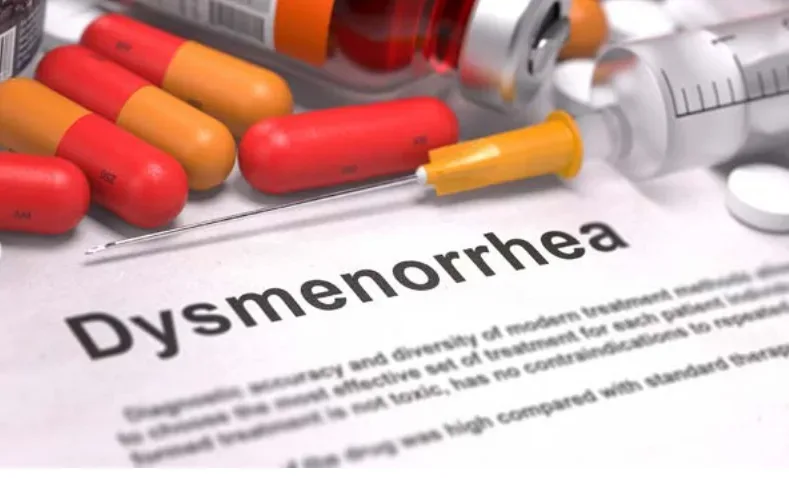Dysmenorrhea – What You Need to Know about this Phenomenon

Menstrual pain and possible causes
Do you know that time of the month when we perceive everything differently, when our body gives us signs that we need to be gentler with it and pay more attention? That time of the month that reserves for some of us a state of total discomfort, accompanied by pain? Well, those pains are known in medical terms as “dysmenorrhea.”
Dysmenorrhea, or the pain that occurs during menstruation, is a harsh reality for many women that they have to go through every month. This pain is classically described as cramping and can be accompanied by nausea, vomiting, headache, and diarrhea.
Dysmenorrhea can be of two types: primary or secondary. Based on research in this field, a series of factors have been identified that can be associated with increased pain duration and severity, such as early onset of menstruation, long menstruation periods, smoking, and high body mass index (BMI). On the other hand, women who exercise regularly and those who have more children seem to suffer less from this symptom.
And yet, why does this pain occur?
During a menstrual cycle, the endometrium (the uterine lining) thickens in anticipation of a potential pregnancy. After ovulation, if the egg is not fertilized, the lining is shed during menstruation.
During menstruation, substances called “prostaglandins” are released, which stimulate the myometrial contractions of the uterus, causing ischemia* so that the lining can detach. Compared to women who do not have such issues, those with severe dysmenorrhea have an increased level of prostaglandins during menstruation, especially in the first two days, hence a higher uterine contractile activity.
Is dysmenorrhea a warning sign? Although we are tempted to believe that menstrual pain is normal, the term secondary dysmenorrhea refers to pain caused by an identifiable associated condition.

Causes of dysmenorrhea:
- Endometriosis – the appearance of endometrial tissue outside the uterine cavity, such as in the ovaries, pelvic peritoneum, and even in the lungs. Excessive endometrial tissue invading the myometrium is called adenomyosis. Women with endometriosis may be asymptomatic or may experience pelvic pain.
- Uterine fibroids – benign tumors of the smooth muscle of the uterus. The incidence of fibroids increases with age and is common in women over 40 years old.
- Pelvic inflammatory disease – an infection of the female reproductive organs. Known sequelae (caused by this condition) include infertility, ectopic pregnancies, and chronic pelvic pain.
- Endometrial polyp – a benign formation developed from the endometrial tissue in the uterine cavity. It is associated with heavy menstrual bleeding and bleeding between periods.
- Anatomical defects that hinder the evacuation of blood from the uterine cavity can cause dysmenorrhea. One example would be a vaginal septum.
Therefore, consult a specialist doctor if menstrual pain is associated with other symptoms such as infertility, dyspareunia (pain during sexual intercourse), abnormal bleeding, chronic pelvic pain, or dysuria. Women with menstrual cramps without other signs and symptoms do not require additional evaluation; they can benefit from empirical treatment. The most well-known and commonly used medications in the treatment of dysmenorrhea are nonsteroidal anti-inflammatory drugs (NSAIDs) and oral contraceptives. For more information, consult your gynecologist.
Ioana Visan (Calo)
" Atractia Ioanei pentru medicina a izvorat din perioada copilariei. Putini sunt cei care doresc sa devina doctori inca din scutece si se mentin pe aceeasi traiectorie pana la maturitate. Pe langa pasiunea pentru corpul uman a manifestat interes si pentru sanatate publica, implicandu-se in campanii de voluntariat derulate de-alungul celor sase ani de Medicina Generala. A sustinut prezentari despre educatie sexuala in licee, prezentari despre cancerul de col uterin si Hpv, implicandu-se totodata in campanii de donare. A fost asistent coordonator si apoi coordonator al proiectului Anti-fumat “Smoke free days”. Si-a perfectionat abilitatile de a comunica si interactiona cu oamenii, prioritiza task-urile si manageria proiectele participand la training-uri de dezvoltare personala: Presentation Skills, Time Management, Public Speaking, Project Management, Project Development si Organizational Management. In prezent este medic rezident pe obstetrica-ginecologie la Spitalul de Urgente Sfantul Ioan - Maternitatea Bucur. “Consider ca adevarata medicina se face cu pasiune si daruire totala. Un medic bun trebuie, sa empatizeze cu pacientii sai si sa stie sa îi asculte. Un zâmbet cald poate schimba un prognostic si asigura complianta la tratament.” "
Recent Posts
Related Articles
CrossFit exercises practiced outdoors or at home
Concentration and discipline are indispensable for succeeding in any training program, regardless...
July 27, 2023Health guide for “ageless” women
Discover the Benefits of Physical Exercise and the Best Types of Training...
July 27, 2023Home-Based Pregnancy Workout in Comfort
The Benefits of Prenatal Home Workout The way we interact with people...
July 10, 2023Supplementation with Vitamins and Minerals
Essential nutrients for the body The macronutrients and micronutrients are essential for...
July 10, 2023

























Leave a comment